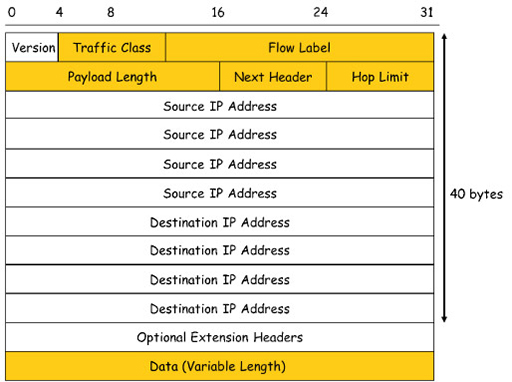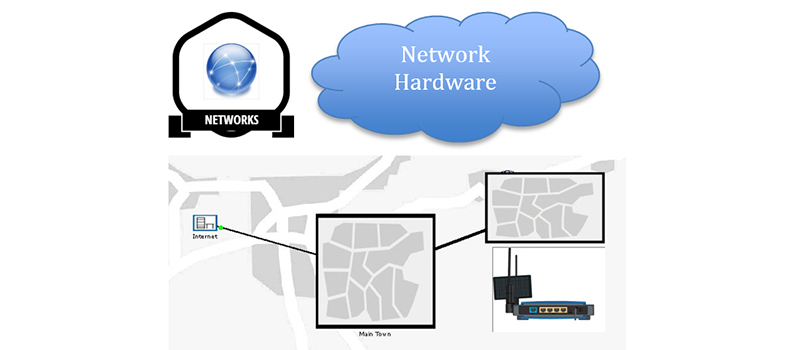9 Internet layer – IPv6
- Work on replacing IPv4 began in the early 1990s when the organisation tasked with its development (the Internet Engineering Task Force or IETF) realised that IPv4 did not have enough addresses to support the growth they expected in the Internet.
- IPv6 overcomes the limitations of IPv4 and includes new features that allow it to support the operation of both existing and foreseeable future networks.
- The improvements included in IPv6 include:
- Increased address space: it uses a 128-bit addressing, which provides a phenomenal number of address (3.4×1038), making it able to support further growth in the Internet. Although the address is still binary, it is represented using hexadecimal for ease of use, e.g. 2001:db8:acad:1:1:1:1/64.
- Packet handling: it uses a simplified header with fewer fields than IPv4, making it easier for routers to process. For example, as there is no longer a header check-sum, routers do not need to perform the error checking function and can rely entirely on TCP.
- Eliminates NAT: it provides a large address space, so it is possible to use IPv6 public addresses on all networks, thus making NAT redundant. This also makes the operation of routers more straightforward.

Figure 12
- The 40-byte IPv6 header shown above is larger than an IPv4 header, but contains far fewer fields that need to be interpreted by the routers involved in packet switching. This leads to an improvement in the performance of IPv6 packet switching devices, and less overall delay in delivering packets across a network.
- The important fields to note are:
- Source address: the 128-bit address assigned to the NIC of the host that created a packet.
- Destination address: the 128-bit address of the device to which the packet is sent. This field is used by routers when they make a packet forwarding decision.
- Data: this is the payload that an IP carries, typically a segment or datagram from the transport layer.
- Next header: this identifies the transport layer protocol encapsulated within a packet, using SAP 06 for TCP and 17 for UDP. Because IPv6 and IPv4 use the same SAPs to communicate with the transport layer, TCP and UDP are unaware which Internet layer protocol is in use. The next header field can also be used to identify optional extension headers.
- Hop limit: this performs the same function as the TTL field in the IPv4 header, but with a more descriptive name.
Back to previous pagePrevious
8 Internet layer – IPv4
